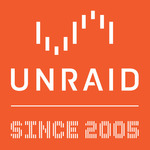Unraid is running a 20th anniversary sale with 20% off the following:
- Starter and Unleashed licenses
- All upgrades to Unleashed
- All Unraid merch (entire month)
Sale Period: 7–26 August 2025
License Pricing (12 months of OS Updates)
| License Type | Number of Drives | Price (USD) | 20% Off Price (USD) |
|---|---|---|---|
| Starter | Up to 6 | $49 | $39.20 |
| Unleashed | Unlimited | $109 | $87.20 |
Upgrade Pricing
| Upgrade Path | Regular Price (USD) | 20% Off Price (USD) |
|---|---|---|
| Starter → Unleashed | $69 | $55.20 |
| Unleashed → Lifetime | $149 | - |
Lifetime
The best deal to get Lifetime is to buy the Unleashed plan and then upgrade to Lifetime
$87.20 + $149 = $236.20
FAQ
Q: What is Unraid?
A: Unraid is a flexible home server operating system that allows you to manage storage drives of mixed sizes, run Docker containers, and host virtual machines.
Q: Is there a free trial?
A: Yes, Unraid offers a 30‑day free trial with full functionality.
Q: How long do updates last with a new license?
A: Each new license includes 12 months of updates from the purchase date.
Q: What happens after 12 months?
A: You can continue using Unraid indefinitely with the features you already have.
If you want to receive new updates after 12 months, you can renew your license.
Unraid is a paid option chosen by users who want:
- Easy mixed‑drive storage (no strict RAID/ZFS requirements)
- Simple parity protection
- Integrated Docker and VM support with minimal setup


Does this discount apply to the Lifetime licence?